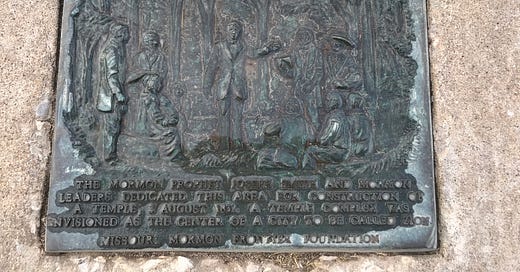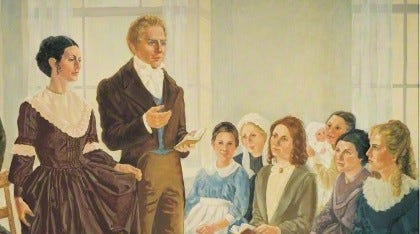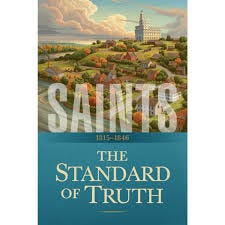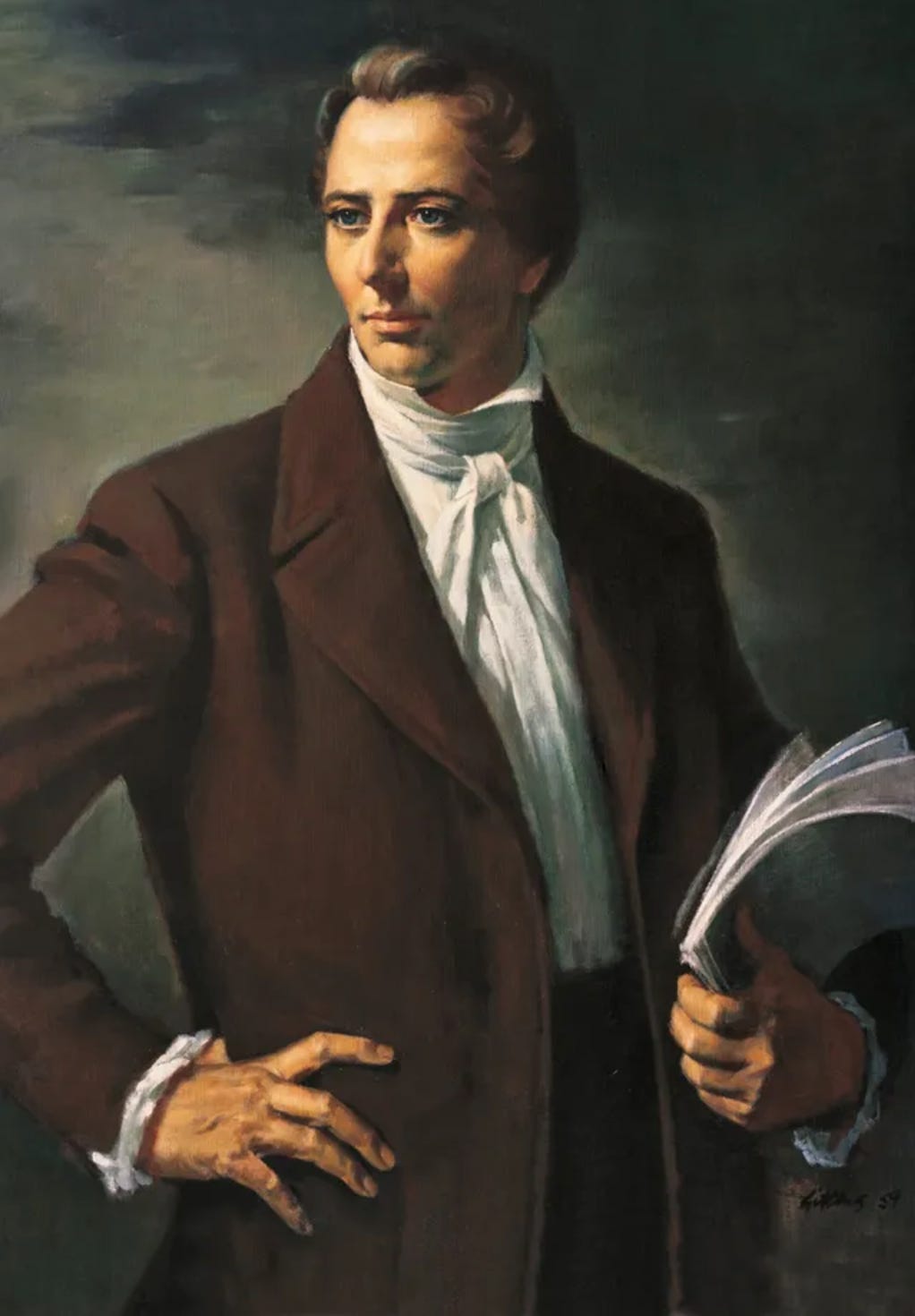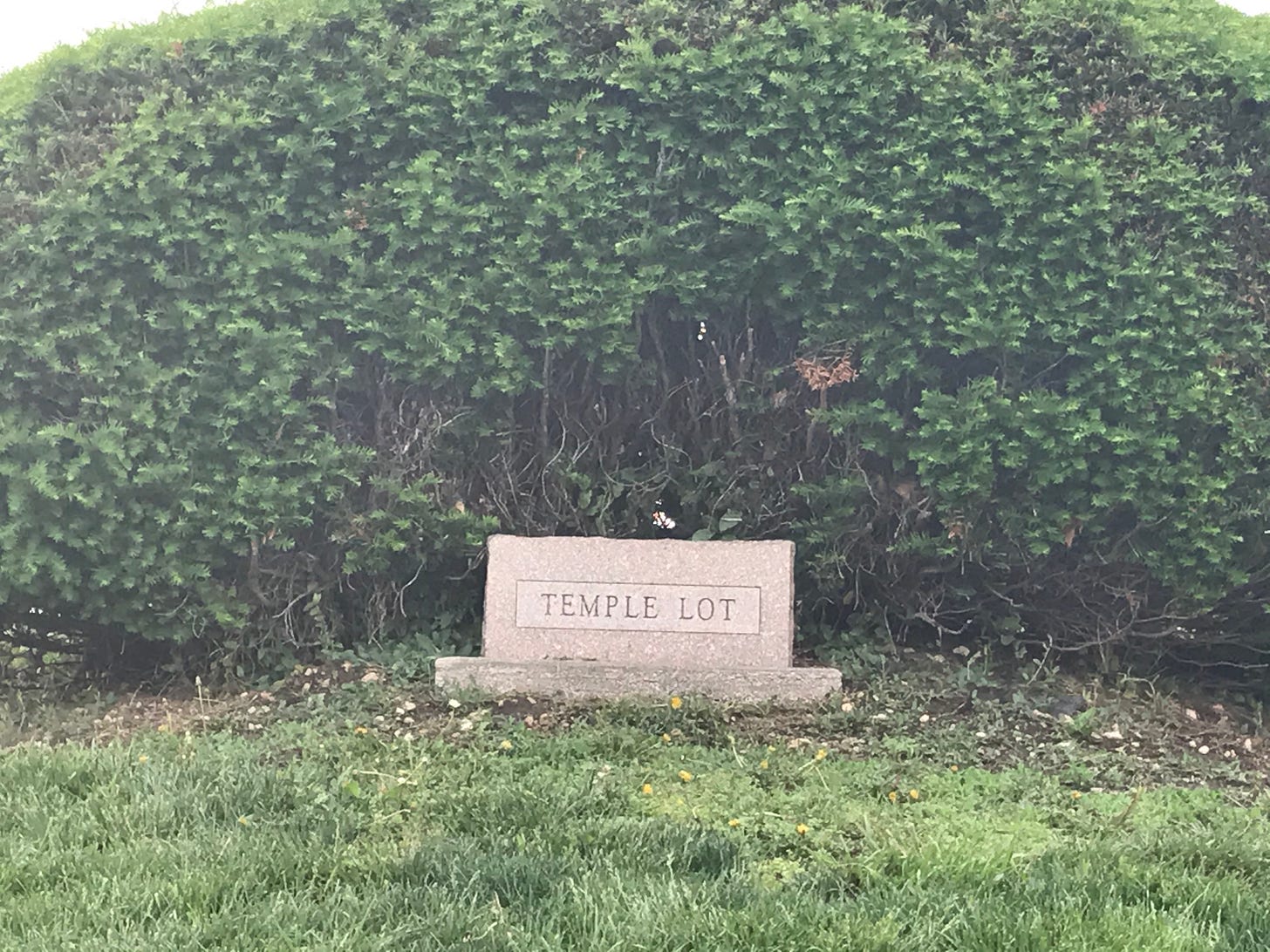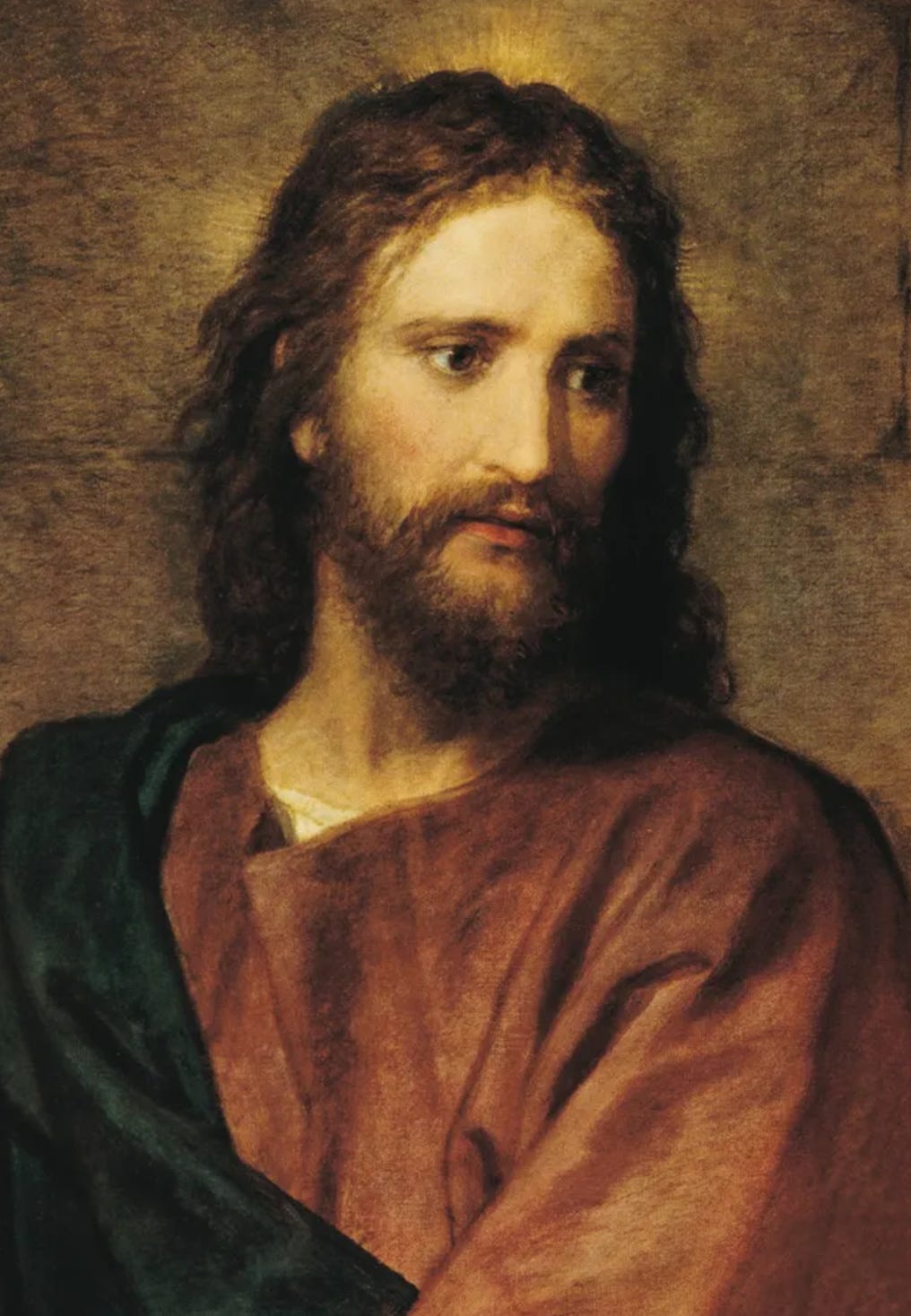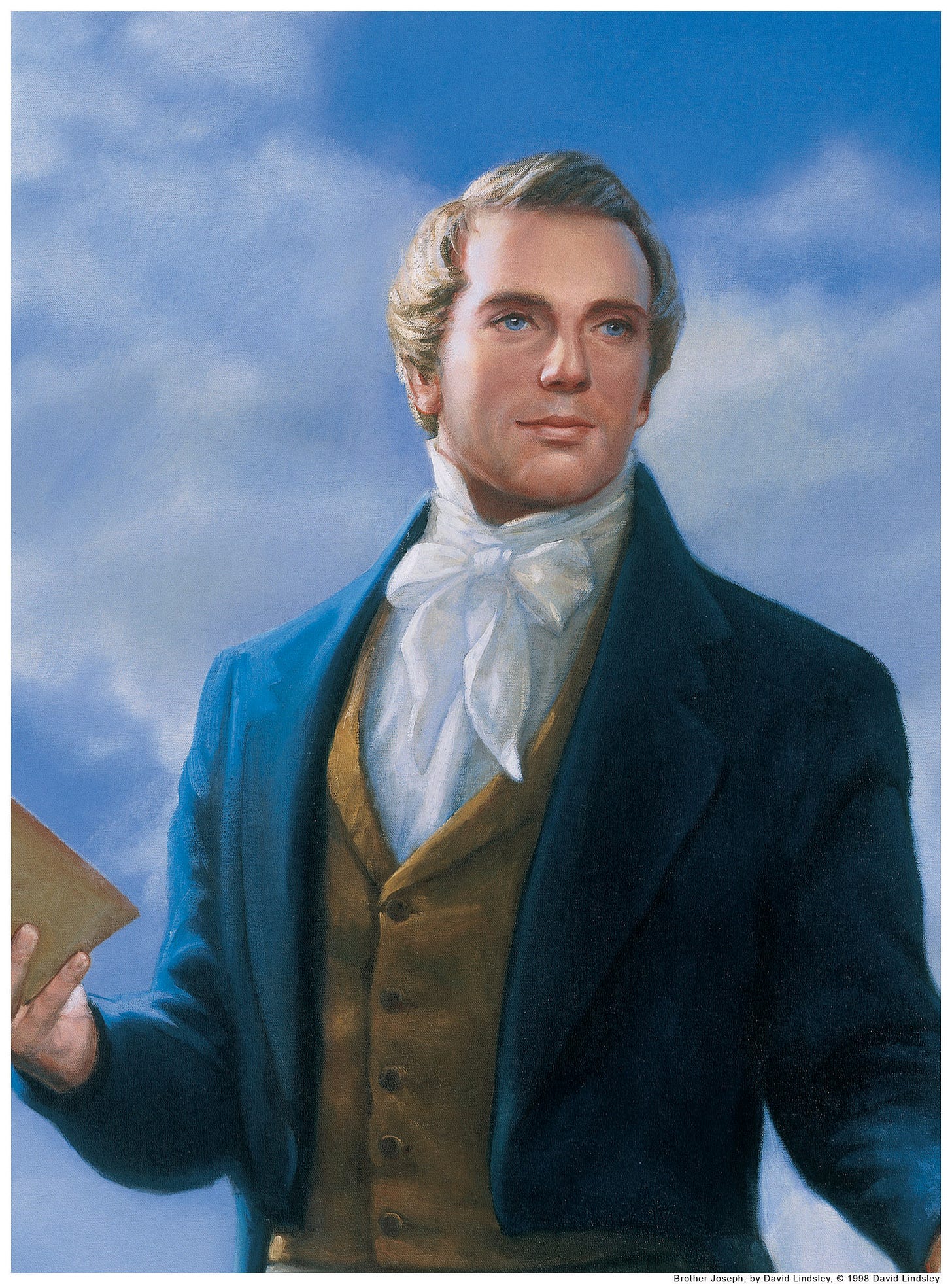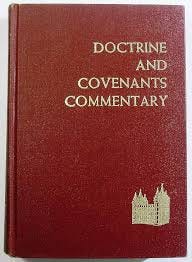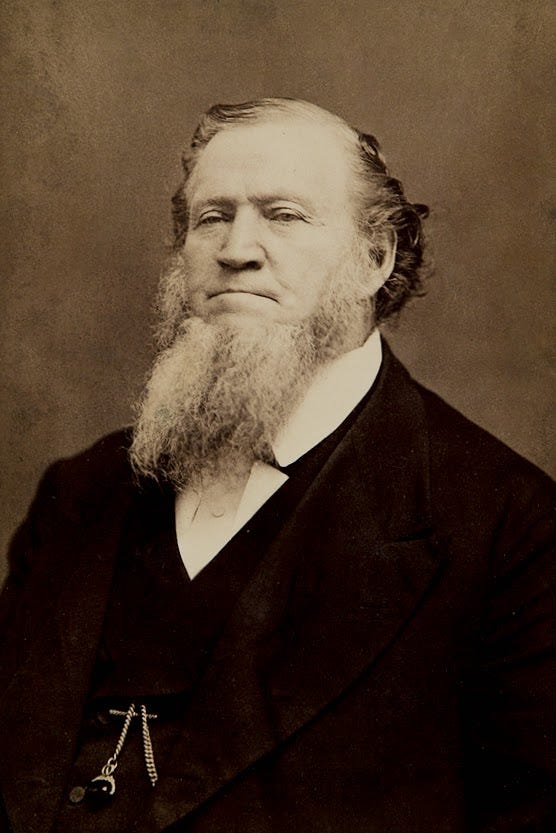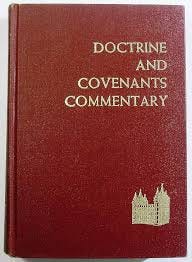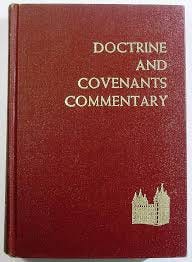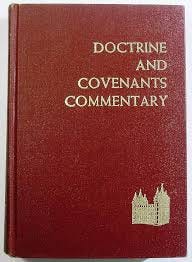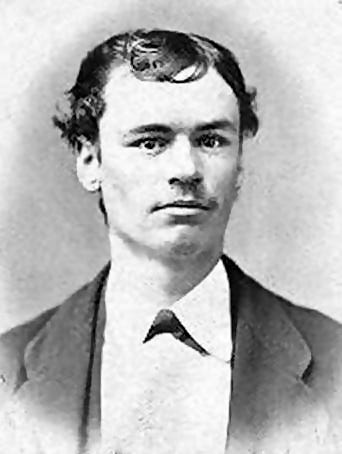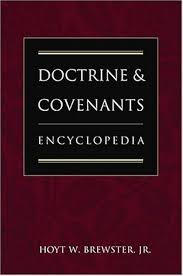When Will Zion Be Built up in Her Glory?
Historical Background and Reflections on Doctrine and Covenants 57
In mid-July 1831 Joseph Smith and his party arrived in Independence, Missouri, and there was a glorious reunion with the missionaries there. As also noted in J. Christopher Conkling’s A Joseph Smith Chronology, the population of Jackson County at the time was less than 3,000 and land cost $1.25 per acre. From Joseph Smith’s perspective, the people there were nearly a century behind the times, and Parley P. Pratt also remarked that they lived in very primitive conditions. Because of the primitive land and the conditions of the people, Joseph Smith wondered how Zion could ever be built in her glory in such a place. In response to his inquiry he received what is now Doctrine and Covenants 57. These were Joseph Smith’s thoughts at the time:
But our reflections were great, coming as we had from a highly cultivated state of society in the east, and standing now upon the confines or western limits of the United States, and looking into the vast wilderness of those that sat in darkness; how natural it was to observe the degradation, leanness of intellect, ferocity, and jealousy of a people that were nearly a century behind the time, and to feel for those who roamed about without the benefit of civilization, refinement, or religion! Yea, and exclaim in the language of the prophets, "When will the wilderness blossom as a rose? . . . and where will Thy temple stand unto which all nations shall come in the last days?" (Times and Seasons 5:434; RLDS History of the Church 1:202; italics added)
In his Chronology, Conkling also notes the following consequential fact:
July 17, 1831
W. W. Phelps, writing to Brigham Young in 1861, claimed that on this day Joseph taught the brethren that plural marriage was a correct principle. (Donna Hill, Joseph Smith: The First Mormon, p. 340.) Because Joseph had been translating the book of Genesis about this time, it is thought likely that he might have inquired of the Lord about the propriety of plural marriage as practiced by the ancient patriarchs. For other references indicating that 1831 was the year in which the doctrine of plural marriage was first made known to Joseph, see History of the Church 5:xxix; Brigham H. Roberts, A Comprehensive History of the Church, pp. 2:95-101; Francis M. Gibbons, Joseph Smith: Martyr, Prophet of God, pp. 285-86; James B. Allen and Glen M. Leonard, The Story of the Latter-day Saints, p. 69; Journal of Discourses, p. 20:29. (p. 25)
As if the events in Kirtland, the persecutions and migrations, the law of consecration, and the revelations regarding the New Jerusalem weren’t exciting enough! In the midst of all these things, and in the midst of his translation of the Bible, if W. W. Phelps’ claim and the claims of others are true, the Prophet Joseph Smith inquired of the Lord regarding plural marriage and received revelation on this subject as early as 1831.
In the chapter “A Bishop unto the Church” in Revelations in Context, we learn more about the historical context for D&C 57:
At about the same time, Joseph Smith, Edward Partridge, and others were also preparing to depart on a trip to Missouri, the anticipated location of the future city of Zion. Partridge left, assuming he would return in a few months. But upon the elders’ arrival in Independence, Missouri, a frontier town in the far western part of the state, Joseph Smith received a revelation (now found in Doctrine and Covenants 57) declaring that Independence was to be the center of latter-day Zion. The revelation also contained a daunting imperative: “It is wisdom that the land should be purchased by the saints & also every tract lying westward even unto the [western border of Missouri,] And also every tract bordering by the Prairies.” The Lord further instructed, “Let my servent Edward [Partridge] stand in the office which I have appointed him to [divide] unto the saints their inheritance even as I have commanded.” The Lord then called several individuals to remain in Missouri and build up Zion. Contrary to his plans, Partridge was among those who were to “be planted in the Land of Zion as speedily as can be with their families to do these things even as I have spoken.” (pp. 77-78)
In the chapter “The Center Place,” in Revelations in Context, we learn even more about the historical context for D&C 57:
Doctrine and Covenants 57, given soon after Joseph Smith arrived in western Missouri, oriented the Saints within this sociopolitical space. The “center place” for Zion, the revelation said, would be located at “the place which is now called Independence,” which at the time had no more than a few hundred residents.17 White settlers at this time often squatted on land, imagining it unpossessed before later registering their claim in the county courthouse. The revelation mentioned this courthouse—a temple, the revelation said, should be built to the west of it. At the time the revelation was given, most of the land had already been claimed by settlers, requiring the Saints to negotiate with the land’s legal possessors. The revelation implied that the Latter-day Saints would not contend for the holy land by force as the Israelites had done in Canaan millennia before. “It is wisdom that the land should be purchased by the saints,” the Lord said.18 (p. 125)
In the chapter “Ezra Booth and Isaac Morley” in Revelations in Context, we learn more important details about this momentous revelation:
The journey was inconvenient for others as well. Joseph Smith departed just weeks after he and Emma lost twins shortly after birth. He left his grieving wife, who would have to care for herself and the newly adopted Murdock twins (whose mother, Julia, had died in late April and whose father, John, would also make the trip to Missouri).
When Ezra Booth finally arrived in Missouri, he felt deflated. He and others “expected to find a country abounding with the necessaries and comforts of life.” Instead, he looked around and noted that “the prospect appeared somewhat gloomy.”9 Booth remembered Joseph Smith confidently asserting before the trip that the Church in Missouri would be large and growing, but when they arrived they found only seven new members.
Joseph Smith himself might have been disappointed initially when he arrived in Missouri. The area around Independence was mostly open prairie with a few scattered trees. Far from inspiring visions of a millennial capital, the frontier town itself was “a century behind the times.”10 For most of the elders, the reality on the ground in Missouri was a disappointment. But they would deal with that disappointment in different ways.
A Prayer for Guidance
Was this really the place and time to try to build up Zion? On July 20, anxious to understand God’s timing and intentions, Joseph turned to the Lord. “When will the wilderness blossom as the rose?” he prayed. “When will Zion be built up in her glory, and where will thy Temple stand?”11 These questions prompted a revelation—now Doctrine and Covenants 57—that finally designated the site for the city and temple. (pp. 131-132)
Lyndon W. Cook’s entry on Section 57 in his book The Revelations of the Prophet Joseph Smith sheds more light on the historical background for this section:
Date. July 1831 (20 July 1831).
Place. Jackson County, Missouri (Independence, as per “Kirtland Revelation Book,” p. 89).
Historical Note. Obedient to the instructions of section 52, numerous pairs of missionaries started for Independence, Missouri. Joseph Smith with seven others (Martin Harris, Sidney Rigdon, Edward Partridge, William W. Phelps, Joseph Coe, A. Sidney Gilbert, and his wife, Elizabeth) left Kirtland for Missouri on 19 June 1831. This group traveled ot Cincinnati by wagon, canal boat, and stage, from Cincinnati to Louisville, Kentucky, and from Louisville to St. Louis, Missouri by steamer. At St. Louis Sidney Rigdon and the Gilberts waited for water conveyance while the others went on foot to Independence, where they arrived before 17 July 1831. At Independence the Prophet and his party were greeted by Oliver Cowdery, others of the Lamanite Mission, and a handful of Missouri converts. Joseph Smith declared that this “meeting of our brethren, who had long awaited our arrival, was a glorious one, and moistened with many tears.” After “viewing the country [and] seeking diligently at the hand of God,” Joseph Smith received section 57, which designated “the very spot upon which [the Lord] designed to commence the work of gathering,” and the upbuilding of an ‘holy city’ even the New Jerusalem. On 2 August 1831, some twelve miles west of Independence, Sidney Rigdon consecrated and dedicated the land for the gathering of the Saints.
The revelation clarified that “the place which is now called Independence is the center place; and a spot for the temple is lying westward, upon a lot which is not far from the court-house.” (See verse 3.) On 3 August 1831, the Prophet dedicated a “spot” for the construction of a temple, which was located approximately one-half mile west of the courthouse (the courthouse mentioned in verse 3 was a brick structure erected 1828-32). Bishop Edward Partridge purchased a tract of land consisting of 63 and 43/166 acres from Jones H. Flournoy on 19 December for $130. This purchase included the three-acre temple lot dedicated by the Prophet.
Publication Note. Section 57 was first published as section 27 in the 1835 edition of the Doctrine and Covenants. (pp. 91-92)
Why does the LDS Come Follow Me manual skip over this crucial section entirely? 🤔
The authors of the first volume of Saints describe the historical background for section 57 in the following terms:
Joseph spoke optimistically about the church in Independence. He told some of the elders that Oliver and the other missionaries were sure to have built up a strong branch of the church there, as they had in Kirtland. Some of the elders took it as a prophecy.
As they neared Jackson County, the men admired the gently rolling prairie around them. With plenty of land for the Saints to spread out, Missouri seemed like the ideal location for Zion. And Independence, with its proximity to a large river and Indian lands, could be the perfect place to gather God’s covenant people.16
But when they reached the town, the elders were unimpressed by what they saw. Ezra Booth, a former minister who had joined the church after seeing Joseph heal a woman’s paralyzed arm, thought the area looked dreary and undeveloped. It had a courthouse, a few stores, several log houses—and little else. The missionaries had baptized only a handful of people in the area, so the branch was not as strong as Joseph had expected. Feeling misled, Ezra and others began to question Joseph’s prophetic gifts.17
Joseph was disappointed too. Fayette and Kirtland were small villages, but Independence was little more than a backwater trading post. The town was a point of departure for trails going west, so it drew fur trappers and teamsters along with farmers and small businessmen. Joseph had known people in most of these trades all his life, but he found the men in Independence especially godless and rough. What’s more, government agents in the town were suspicious of the missionaries and would likely make preaching to Indians difficult, if not impossible.18
Discouraged, he took his concerns to the Lord. “When will the wilderness blossom as the rose?” he asked. “When will Zion be built up in her glory, and where will Thy temple stand?”19
On July 20, six days after his arrival, Joseph’s prayers were answered. “This land,” the Lord told him, “is the land which I have appointed and consecrated for the gathering of the saints.”
They had no reason to look elsewhere. “This is the land of promise,” He declared, “and the place for the city of Zion.” The Saints were to purchase as much of the available land as possible, build homes, and plant fields. And on a bluff west of the courthouse, they were to build a temple.20
I wonder why, after almost two centuries, I have the same questions as the Prophet Joseph Smith? When will the wilderness blossom as the rose? When will Zion be built up in her glory? Where will Thy Temple stand? I know that I’m not the only one who wonders.
In 2021, not long after the so-called “pandemic” erupted and wreaked havoc in the lives of billions of people, I traveled to the Center Place, to Zion, Independence, Missouri. I had been there at least a couple of times before, but my longing for the New Jerusalem drew me there again. In some ways perhaps I felt the same as Joseph Smith and the early Saints felt about Independence, Missouri when they first arrived there. Especially after almost two centuries, my disappointment might even be magnified because of our failure to build the New Jerusalem thus far. The wilderness has blossomed somewhat, but when will it truly blossom as the rose? When will Zion truly be built up in her glory? When? We now have the answer to at least the last in this series of questions: Where will Thy Temple stand?
I took these picture while touring the Temple lot and pondering the aforementioned questions. The wilderness has yet to truly blossom as the rose. Zion has yet to be built up in her glory. The Temple has yet to be built. What on earth are we waiting for?
The elders had obeyed the Lord’s instructions and journeyed from Ohio to Missouri’s western border. Joseph Smith contemplated the state of the Lamanites and recorded the aforementioned questions that I record once more for emphasis:
When will the wilderness blossom as the rose?
When will Zion be built up in her glory?
Where will Thy temple stand, unto which all nations shall come in the last days?
On July 20, 1831, in Zion, Jackson County, Missouri, in response to his inquiry, the Prophet Joseph Smith received the following revelation, which we will study a piece at a time:
Hearken, O ye elders of my church, saith the Lord your God, who have assembled yourselves together, according to my commandments, in this land, which is the land of Missouri, which is the land which I have appointed and consecrated for the gathering of the saints.
Wherefore, this is the land of promise, and the place for the city of Zion.
And thus saith the Lord your God, if you will receive wisdom here is wisdom. Behold, the place which is now called Independence is the center place; and a spot for the temple is lying westward, upon a lot which is not far from the courthouse. (D&C 57:1-3)
This is it! Independence is the center place. The spot for the Temple has already been identified and dedicated. Joseph Smith directed the dedication of the Temple site by Sidney Rigdon soon thereafter, on August 3, 1831. On the same date, the Church claimed the site for eventual purchase, and Joseph Smith laid the corner-marking stone.
On December 19, 1831, Bishop Edward Partridge purchased a 63-acre parcel of Jones Flournoy’s land that included the site for the Temple. Joseph Smith created a plat for the city of Zion that was centered on the Temple lot, but the Saints were later driven and expelled from Jackson County in November, 1833, which prevented the construction of the Temple.
In his History, John Whitmer described the laying of the foundations for Zion:
Now after the elders that were commanded to go to Missouri had arrived, they held a conferanc upon that land according to Revelation given in a preceeding Commandmnt. And thus they rejoiced together upon the land of Zion. And offered their Sacraments and oblations unto the Lord, for his mercy and goodness which endureth for ever.
When they had held their sacrament meetings,
the Lordand the Laying of the foundation of the City, and cornerstone of the Temple, the Lord gave commandments to return. I here give a copy of the proceedings of the Laying of the first logs of the City of Zion. As written by Oliver Cowdery.“After many struggles and afflictions, being perssecuted by our enemies, we received inteligence by letter from our brethren, who were at the East. That br Joseph and Sidney [Rigdon], and many other
selders, were commanded to take their Journey to this land, the Land of Missouri. Which was promised unto us should be the land of the inheritance of the saints, and the place of the gathering in these last days. Which inteligence cheered our hearts, and caused us to rejoice exceedingly. And by the specialdirectionsprotections of the Lord, br Joseph Smith Jr. and Sidney Rigdon, in company with eight other elders, with the church from Colesville New York, consisting of about sixty souls, arivd in the month of July and by Revelation the place was made known where the Temple shall stand, and the City should commence. And by commandment twelve of us assembled ourselves together Viz. Elder Joseph Smith Jr. the Seer. Oliver Cowdery, Sidney Rigdon, Newel Knight, William W. Phelps, and Ezra Booth who denied the faith.”On the second day of August 1831, Brother Sidney [p. 31] Rigdon stood up and asked saying: Do you receive this land for the land of your inheritanc[e] with thankful hearts from the Lord? answer from all we do, Do you pledge yourselves to keep the laws of God on this land, which you have never have kept in your own land? we do. Do you pledge yourselves to see that others of your brethren, who shall come hither do keep the laws of God? We do. After prayer he arose and said, I now pronounce this land consecrated and dedicated to the Lord for a possession and inheritanc for the Saints, (in the name of Jesus Christ having authority from him.) And for all the faithful Servants of the Lord to the remotest ages of time. Aamen.
The day following eight Elders viz. Joseph Smith Jr., Oliver Cowdery, Sidney Rigdon, Peter Whitmer Jr., Frederick G. Williams, Wm. W. Phelps, Martin Harris, and Joseph Coe, assembled together where the temple is to be erected. Sidney Rigdon dedicated the ground where the city is to Stand: and Joseph Smith Jr. laid a stone at the North east corner of the contemplated Temple in the name of the Lord Jesus of Nazareth. After all present had rendered thanks to the great ruler of the universe. Sidney Rigdon pronounced this Spot of ground wholy dedicated unto the Lord forever: Amen.[”]
This dedicatory prayer and ceremony contains words such as “dedicated,” “consecrated,” “forever,” “remotest ages of time,” “the place of the gathering in these last days,” “where the Temple shall stand,” and where “the City should commence.” Even though the Saints were expelled from Jackson County in 1833, even though, in a revelation in 1841, the Saints of that time were released from the obligation to build the Temple in Jackson County due to persecution, and even though Brigham Young and other apostles approved the sale of the property for the Temple in 1848, does any of that rescind the Lord’s revelations given in section 57? No.
Joseph Smith gave the dedicatory prayer for the Temple and Psalm 87 was read:
A Psalm or Song for the sons of Korah.
His foundation is in the holy mountains.
The Lord loveth the gates of Zion more than all the dwellings of Jacob.
Glorious things are spoken of thee, O city of God. Selah.
I will make mention of Rahab and Babylon to them that know me: behold Philistia, and Tyre, with Ethiopia; this man was born there.
And of Zion it shall be said, This and that man was born in her: and the highest himself shall establish her.
The Lord shall count, when he writeth up the people, that this man was born there. Selah.
As well the singers as the players on instruments shall be there: all my springs are in thee. (Psalm 87:1-7)
In what is now D&C 124 the Lord temporarily excused the Saints from building the Temple in Jackson county because of the oppression of their enemies:
And if my people will hearken unto my voice, and unto the voice of my servants whom I have appointed to lead my people, behold, verily I say unto you, they shall not be moved out of their place.
But if they will not hearken to my voice, nor unto the voice of these men whom I have appointed, they shall not be blest, because they pollute mine holy grounds, and mine holy ordinances, and charters, and my holy words which I give unto them.
And it shall come to pass that if you build a house unto my name, and do not do the things that I say, I will not perform the oath which I make unto you, neither fulfil the promises which ye expect at my hands, saith the Lord.
For instead of blessings, ye, by your own works, bring cursings, wrath, indignation, and judgments upon your own heads, by your follies, and by all your abominations, which you practice before me, saith the Lord.
Verily, verily, I say unto you, that when I give a commandment to any of the sons of men to do a work unto my name, and those sons of men go with all their might and with all they have to perform that work, and cease not their diligence, and their enemies come upon them and hinder them from performing that work, behold, it behooveth me to require that work no more at the hands of those sons of men, but to accept of their offerings.
And the iniquity and transgression of my holy laws and commandments I will visit upon the heads of those who hindered my work, unto the third and fourth generation, so long as they repent not, and hate me, saith the Lord God.
Therefore, for this cause have I accepted the offerings of those whom I commanded to build up a city and a house unto my name, in Jackson county, Missouri, and were hindered by their enemies, saith the Lord your God.
And I will answer judgment, wrath, and indignation, wailing, and anguish, and gnashing of teeth upon their heads, unto the third and fourth generation, so long as they repent not, and hate me, saith the Lord your God.
And this I make an example unto you, for your consolation concerning all those who have been commanded to do a work and have been hindered by the hands of their enemies, and by oppression, saith the Lord your God.
For I am the Lord your God, and will save all those of your brethren who have been pure in heart, and have been slain in the land of Missouri, saith the Lord.
And again, verily I say unto you, I command you again to build a house to my name, even in this place, that you may prove yourselves unto me that ye are faithful in all things whatsoever I command you, that I may bless you, and crown you with honor, immortality, and eternal life. (D&C 124:45-55)
The Saints were hindered by their enemies for a time, but they proved faithful nonetheless. Now that the Missouri persecutions have past, and now that the Church of Jesus Christ of Latter-day Saints has built or planned almost 400 Temples around the world, one might reasonably ask why we have delayed building the Temple in Independence, Missouri?
Do modern Latter-day Saints believe that because the Lord accepted the offerings of these early Saints when their efforts were hindered by their enemies, and when they later built a Temple in Nauvoo and other places, that therefore the revelation in D&C 57 is null and void?
A couple of years after my visit to Independence, the Church History Matters podcast featured an excellent conversation between Casey Griffiths and Scott Woodward on the topic of Independence and the City of Zion. Casey and Scott noted that after the Saints were expelled to Nauvoo, they still wondered about their duty to build the Temple in Missouri. Scott Woodward shared verses from D&C 124 about how the Lord accepted the offerings of the Saints, and then Casey Griffiths asked the right question:
Does that mean that we’re not going to build the Temple complex in Independence as they had planned? Or how do you interpret that?
In Woodward’s estimation - and he makes a good point - D&C 124 is the final word on the subject until the Lord sees fit to reveal more. In my opinion, however, I think that we need to study D&C 57 and previous sections more closely. It doesn’t make sense to me that the Lord would reveal this special and sacred Center Place and spot for the Temple and the gathering of the Saints into Zion unless it truly was the Center Place. I think that there is more nuance to the Lord’s revelation in D&C 124 because He required that work no more “at the hands of those sons of men.” In other words, the Lord may certainly still require that work at the hands of other sons of men, even though He already accepted the offering of the early Saints.
The early Saints were hindered by their enemies and by oppression in Missouri, but what is our excuse now? The Lord provided other ways for the early Saints to prove themselves to Him, that they were faithful in all things, and that He might bless them and crown them with honor, immortality, and eternal life. But it is still certainly possible, and in my mind likely, that the Lord will require something else of us. I like Woodwards’s interpretation because further revelation is required, but I don’t think that the Lord would establish a Center Place for Zion only to abandon it forever.
What do Smith and Sjodahl add to our understanding of the first part of this revelation in D&C 57?
In the Book of Mormon the Saints were told (Ether 13:1-12), that the New Jerusalem and Holy Sanctuary of the Lord should be located in America (Comp. III. Nephi 20:22; 21:23), and they were anxious to know where the site for the City was. In September, 1830, the Lord gave them to understand that the City should be erected “on the borders by the Lamanites” (Sec. 28:9). In February, 1831, they were promised that a Revelation should be given on that subject, if they would pray for it (Sec. 42:62). On the 7th of March, the same year, they were given to understand that the gathering from the eastern States and the sending out of Elders on the mission to the West were preparatory steps to the establishment of that City, wherefore the Saints should gather up their riches and purchase an inheritance in the place to be indicated, which should be a place of refuge for the Saints of the most high God (Sec. 45:64-66). The time had not come for the fulfilment of the promise referred to (Sec. 42:62), and this Revelation was received. In it the Lord (1) designates the location of the City and the Temple site (1-3); (2) instructs the Saints how to locate (4-5); (3) gives special directions concerning the first settlement (6-15); and (4) closes with a promise (16).
Zion and the Temple.
The land of Missouri] That is the land which, in the providence of God, has been appointed and consecrated for the gathering of the Saints.
The land of promise] To the Latter-day Saints Missouri is the land of promise. There the City of Zion will be established. There the City of Enoch, coming down from heaven, will meet the City of the Saints, and the two will be united and known as the New Jerusalem.
The center place] Independence is designated as the center place, and the Temple site is pointed out on “a lot not far from the court house.” Zion, it may be added, has not been removed, though her children have been scattered (Secs. 90:37; 101:17).
On the 2nd of August, 1831, the Prophet assisted the Colesville Saints, who had just arrived from Thompson, O., to lay the first log for a house, as a foundation of Zion in Kaw Township. The log was carried by twelve men, each representing one of the twelve tribes of Israel, and the land was dedicated by Sidney Rigdon for the gathering of the Saints. On the 3rd day of August the Temple site was dedicated. This sacred act of the holy Priesthood is as binding today as it was then.
Brigham Young, before the Saints were driven out of the State of Missouri, was shown in a vision that they were scattered in all directions, but that they eventually returned to Jackson county, from the west. He says, “When this people return to the Center* Stake of Zion, they will go from the west” (Jour. of Dis., Vol. XI., p. 17). (pp. 327-328)
I think that Smith and Sjodahl are on the right track, and I’m very interested in Brigham Young’s vision and prophesy regarding the return of the Saints to the Center Stake of Zion:
Shall we still cling to the faith of Christ, or will we forsake the Lord our God, and seek “the friendship of the world which is enmity against God?” Before we were driven out of Missouri I had a vision, if I would dare to say that I had a vision, and saw that the people would go to the east, to the north and to the west; but we should go back to Jackson County from the west. When this people return to the Center Stake of Zion, they will go from the west. The Lord has used every means to save the nation.
There is a pattern in the Book of Mormon that, in my opinion, will repeat itself in the last days. When the Gadianton robbers and other wicked people became so numerous and powerful and destroyed the government of the Nephites, the Nephites were compelled to gather together in one spot to defend themselves. It may be that this pattern will repeat itself, and the righteous will be compelled to gather together in one spot. There are other verses in the Doctrine and Covenants that support this interpretation of the necessity of gathering into one spot:
And now, behold, I say unto you that it is not revealed, and no man knoweth where the city Zion shall be built, but it shall be given hereafter. Behold, I say unto you that it shall be on the borders by the Lamanites. (D&C 28:9)
and,
And ye are called to bring to pass the gathering of mine elect; for mine elect hear my voice and harden not their hearts;
Wherefore the decree hath gone forth from the Father that they shall be gathered in unto one place upon the face of this land, to prepare their hearts and be prepared in all things against the day when tribulation and desolation are sent forth upon the wicked. (D&C 29:7-8)
and,
Until the time shall come when it shall be revealed unto you from on high, when the city of the New Jerusalem shall be prepared, that ye may be gathered in one, that ye may be my people and I will be your God.
Thou shalt ask, and it shall be revealed unto you in mine own due time where the New Jerusalem shall be built. (D&C 42:9, 62)
and,
Wherefore I, the Lord, have said, gather ye out from the eastern lands, assemble ye yourselves together ye elders of my church; go ye forth into the western countries, call upon the inhabitants to repent, and inasmuch as they do repent, build up churches unto me.
And with one heart and with one mind, gather up your riches that ye may purchase an inheritance which shall hereafter be appointed unto you.
And it shall be called the New Jerusalem, a land of peace, a city of refuge, a place of safety for the saints of the Most High God; (D&C 45:64-66)
and,
Saying: I, the Lord, will make known unto you what I will that ye shall do from this time until the next conference, which shall be held in Missouri, upon the land which I will consecrate unto my people, which are a remnant of Jacob, and those who are heirs according to the covenant.
And thus, even as I have said, if ye are faithful ye shall assemble yourselves together to rejoice upon the land of Missouri, which is the land of your inheritance, which is now the land of your enemies. (D&C 52:2, 42)
and,
Hearken, O ye elders of my church, and give ear to my word, and learn of me what I will concerning you, and also concerning this land unto which I have sent you. (D&C 58:1)
and,
And, as I, the Lord, in the beginning cursed the land, even so in the last days have I blessed it, in its time, for the use of my saints, that they may partake the fatness thereof. (D&C 61:17)
and,
For the land of Zion shall be a seat and a place to receive and do all these things. (D&C 69:6)
and,
Which city shall be built, beginning at the temple lot, which is appointed by the finger of the Lord, in the western boundaries of the State of Missouri, and dedicated by the hand of Joseph Smith, Jun., and others with whom the Lord was well pleased.
Verily this is the word of the Lord, that the city New Jerusalem shall be built by the gathering of the saints, beginning at this place, even the place of the temple, which temple shall be reared in this generation.
For verily this generation shall not all pass away until an house shall be built unto the Lord, and a cloud shall rest upon it, which cloud shall be even the glory of the Lord, which shall fill the house.
Therefore, as I said concerning the sons of Moses—for the sons of Moses and also the sons of Aaron shall offer an acceptable offering and sacrifice in the house of the Lord, which house shall be built unto the Lord in this generation, upon the consecrated spot as I have appointed— (D&C 84:3-5, 31)
and,
Verily I say unto you, that it is my will that a house should be built unto me in the land of Zion, like unto the pattern which I have given you.
Yea, let it be built speedily, by the tithing of my people.
Behold, this is the tithing and the sacrifice which I, the Lord, require at their hands, that there may be a house built unto me for the salvation of Zion—
For a place of thanksgiving for all saints, and for a place of instruction for all those who are called to the work of the ministry in all their several callings and offices;
That they may be perfected in the understanding of their ministry, in theory, in principle, and in doctrine, in all things pertaining to the kingdom of God on the earth, the keys of which kingdom have been conferred upon you.
And inasmuch as my people build a house unto me in the name of the Lord, and do not suffer any unclean thing to come into it, that it be not defiled, my glory shall rest upon it;
Yea, and my presence shall be there, for I will come into it, and all the pure in heart that shall come into it shall see God.
But if it be defiled I will not come into it, and my glory shall not be there; for I will not come into unholy temples.
And, now, behold, if Zion do these things she shall prosper, and spread herself and become very glorious, very great, and very terrible.
And the nations of the earth shall honor her, and shall say: Surely Zion is the city of our God, and surely Zion cannot fall, neither be moved out of her place, for God is there, and the hand of the Lord is there;
And he hath sworn by the power of his might to be her salvation and her high tower. (D&C 97:10-20)
and,
Therefore let my servant Joseph Smith, Jun., say unto the strength of my house, my young men and the middle aged—Gather yourselves together unto the land of Zion, upon the land which I have bought with money that has been consecrated unto me.
And let all the churches send up wise men with their moneys, and purchase lands even as I have commanded them.
And inasmuch as mine enemies come against you to drive you from my goodly land, which I have consecrated to be the land of Zion, even from your own lands after these testimonies, which ye have brought before me against them, ye shall curse them; (D&C 103:22-24)
and,
Verily, verily, I say unto you, that when I give a commandment to any of the sons of men to do a work unto my name, and those sons of men go with all their might and with all they have to perform that work, and cease not their diligence, and their enemies come upon them and hinder them from performing that work, behold, it behooveth me to require that work no more at the hands of those sons of men, but to accept of their offerings.
And the iniquity and transgression of my holy laws and commandments I will visit upon the heads of those who hindered my work, unto the third and fourth generation, so long as they repent not, and hate me, saith the Lord God.
Therefore, for this cause have I accepted the offerings of those whom I commanded to build up a city and a house unto my name, in Jackson county, Missouri, and were hindered by their enemies, saith the Lord your God. (D&C 124:49-51)
In 1833, the First Presidency prepared a revised plat for the City of Zion. The early Saints were serious about building the City of Zion. Why aren’t we? Why has the site been dedicated and consecrated but the Temple (and Temple complex) not constructed? The Independence Temple was the first Temple that the Lord commanded to be built in this dispensation. This region is also significant because it is the location of the Garden of Eden.
The revelation in D&C 57 continues:
Wherefore, it is wisdom that the land should be purchased by the saints, and also every tract lying westward, even unto the line running directly between Jew and Gentile;
And also every tract bordering by the prairies, inasmuch as my disciples are enabled to buy lands. Behold, this is wisdom, that they may obtain it for an everlasting inheritance. (D&C 57:4-5)
By metonymy “Jew” here refers to the Lamanites, and “Gentile” to the white settlers. In an earlier revelation, the Lord commanded the Saints to save all the money that they could that in time they would be enabled to purchase land for an inheritance, even the city. (See D&C 48:4) Smith and Sjodahl explain:
How to Obtain Land.
Should be purchased] The Saints were to be strictly honest in all their dealings with their fellowmen. Jackson County at this time was sparsely settled. There was a great deal of unoccupied land, and this could be secured at the price of $1.25 an acre.
An everlasting inheritance] The land so purchased would be a permanent possession. (pp. 328-329)
The revelation in D&C 57 continues:
And let my servant Sidney Gilbert stand in the office to which I have appointed him, to receive moneys, to be an agent unto the church, to buy land in all the regions round about, inasmuch as can be done in righteousness, and as wisdom shall direct.
And let my servant Edward Partridge stand in the office to which I have appointed him, and divide unto the saints their inheritance, even as I have commanded; and also those whom he has appointed to assist him.
And again, verily I say unto you, let my servant Sidney Gilbert plant himself in this place, and establish a store, that he may sell goods without fraud, that he may obtain money to buy lands for the good of the saints, and that he may obtain whatsoever things the disciples may need to plant them in their inheritance.
And also let my servant Sidney Gilbert obtain a license—behold here is wisdom, and whoso readeth let him understand—that he may send goods also unto the people, even by whom he will as clerks employed in his service;
And thus provide for my saints, that my gospel may be preached unto those who sit in darkness and in the region and shadow of death.
And again, verily I say unto you, let my servant William W. Phelps be planted in this place, and be established as a printer unto the church.
And lo, if the world receive his writings—behold here is wisdom—let him obtain whatsoever he can obtain in righteousness, for the good of the saints.
And let my servant Oliver Cowdery assist him, even as I have commanded, in whatsoever place I shall appoint unto him, to copy, and to correct, and select, that all things may be right before me, as it shall be proved by the Spirit through him.
And thus let those of whom I have spoken be planted in the land of Zion, as speedily as can be, with their families, to do those things even as I have spoken.
And now concerning the gathering—Let the bishop and the agent make preparations for those families which have been commanded to come to this land, as soon as possible, and plant them in their inheritance. (D&C 57:6-15)
By now we are at least somewhat familiar with Algernon Sidney Gilbert, Edward Partridge, William W. Phelps, and Oliver Cowdery and their callings. Along with the Prophet Joseph Smith and Sidney Rigdon, and several other great men and women, Gilbert, Partridge, Phelps, and Cowdery were instrumental in laying the foundations for Zion. The Lord had a special work for each of them to do, and the wisdom in the order of the Lord’s work is apparent.
The Saints needed lands for their inheritance, order in the division of the lands of inheritance, a store and goods to buy lands and provide for them, a printer, an editor, and writings for the education, especially of children. The Lord prepared the way for His Saints to flourish in Missouri and from there to preach the Gospel to others in the surrounding regions, especially to the Lamanites, and He commanded that His Saints obtain all of these blessings by righteous means. The Lord was planting His people and their families in their inheritance in Zion, preparing the way for the greater gathering of Israel.
Smith and Sjodahl observe:
Instructions Regarding Settlement.
Sidney Gilbert *** to be an agent] He had been appointed to that position (Sec. 53:4). He was to buy land in righteousness and wisdom.
Edward Partridge *** to divide the Saints their inheritance] That was his calling (Sec. 41:9; 42:10).
That he may sell goods without fraud] Sidney Gilbert was instructed to establish a store, sell goods without fraud, and use the profits for the good of the Saints.
“‘Sell goods without fraud.’ That is a point I wish our merchants to look at; if that does not hit them squarely in the face, I am mistaken” (Brigham Young, Jour. of Dis., Vol. XI., p. 326).
Sidney Gilbert’s store was not a money-making scheme for him. His business was to be conducted as for the Lord. The profit was to be used for the building up of Zion.
- 10. For that reason his traveling agents were also to labor with the end in view of enabling the Saints to preach the gospel.
-
William W. Phelps *** a printer unto the Church] That was his calling (Sec. 55:4).
Let him obtain *** for the good of the saints] He, too, was to labor for the Saints. The Lord recognizes the importance of the printed word, and enlists the press in His service, for the building up of Zion.
Let *** Oliver Cowdery assist him] In Sec. 55:4, Phelps is appointed to assist Cowderyl here Cowdery is mentioned as the assistant. There is no discrepancy in this. It only shows that God intended them to assist each other as fellow-laborers in the same service.
-
Concerning the gathering] The Bishop and the agent are here instructed to make preparations for the reception of the Colesville Saints who, in obedience to the divine command (Sec. 54:7, 8), were on the road to Zion. (p. 330)
The revelation in D&C 57 concludes:
And unto the residue of both elders and members further directions shall be given hereafter. Even so. Amen. (D&C 57:16)
As the Good Shepherd and Master Teacher, Jesus Christ directed and taught His Saints, His sheep and His little children, as quickly as they could learn and implement His teachings. It’s amazing to consider the rapid progress that these early Saints made. The Church had only been organized and the Book of Mormon published for about a decade, and already they were laying the foundations for Zion, the New Jerusalem. With the resources, people, and revelations that we have now, and with the example of the early Saints from which to learn, shouldn’t we too be able to make even more rapid progress? The New Jerusalem should be built and thriving by 2030, at least. Why not? Would we rather build the New World Order?
Smith and Sjodahl add their final, excellent commentary on this section:
A Divine Promise.
The Lord, in closing this Revelation, promises to give further instructions, as needed. God gives Revelations only when they are needed. Says President Brigham Young:
“I am thankful that I do no hear, of late, since the Spirit has been generally diffused among the people, ‘O Lord, give Revelations to Brother Brigham.’ I wish to fulfil what we have received before I ask for more. I said to Brother Joseph, the spring before he was killed, ‘You are laying out work for twenty years.’ He replied, ‘You have as yet scarcely begun to work; but I will set you enough to last you during your lives, for I am going to rest” (Journal of Discourses, Vol. V., p. 331).
General Notes
The city of Independence is situated in one of the most attractive and healthful parts of Missouri, 338 feet about the level of the Missouri river, and 1,075 feet above sea level. It is an old town. It was laid out in 1827, but in 1831 it was only a village. It is now a suburb of Kansas City.
As soon as this Revelation had been received, Edward Partridge and the other brethren, appointed to “plant” themselves in Zion, began the work of building. During the first winter the settlers put up with many inconveniences. In some log cabins, without windows and with the frozen ground for floor, several families were living together. They had very little to eat, but they were united, and their hearts were filled with brotherly love and a fervent desire to build up Zion. As a consequence, their meetings were times of refreshing, and in their family devotions they were blessed with the presence of the Holy Spirit. And as soon as the Saints in Ohio and elsewhere learned that the site of the City of Zion had been made known, the spirit of gathering was poured out upon them, and many sent money to Sidney Gilbert, the agent, and instructed him to secure land for them. So rapidly did they gather, that in 1832 there were 830 souls in the new settlements, and a certain degree of prosperity had begun to attend their efforts.
Very soon the spirit of the world entered the Church in Zion. Seven High Priests, Oliver Cowdery, William W. Phelps, John Whitmer, Sidney Gilbert, Edward Partridge, Isaac Morley, and John Corrill, had been appointed to preside over the Saints in Missouri, but many of those who came, refused to acknowledge their authority. Others did not obey the Law of Consecration. Jealousies, covetousness, light-mindedness were followed by neglect to keep the commandments of God, and His wrath was kindled against Zion. A word of warning seemed to have the desired effect, for a general assembly was called and the Saints promised repentance. However, the Spirit of Revelation indicated that they must pass through tribulation, before they could receive the blessings in Zion.
This remarkable prediction was fulfilled, for they were driven out of Missouri, and the persecution extended into Illinois, until the Church had no resting-place within the confines of the United States, but was compelled to go to the Mountains, as foretold by the Prophet.
In 1845, Brigham Young and associates addressed letters to all the Governors of the States and Territories in the Union, except Missouri and Illinois, for obvious reasons, asking them for an asylum, within their borders, for the Saints. Everyone of them, with the single exception of the Governor of Arkansas (See Whitney’s Hist. of Utah, Vol. I., p. 243), either refused to comply with the request or neglected to reply. Three members of Congress advised the Saints to leave the Country. They took this advice and went to Utah, which then was part of Mexico. The Lord led His people to the Valleys of the Mountains. He will also lead them back to the Land of Promise; not all of them; but such as are prepared to live in accordance with His laws and commandments.
“Will the time ever come that we can commence and organize this people as a family? It will. Do we know that? Yes; what was lacking in these revelations from Joseph to enable us to do so was revealed to me” (Brigham Young, Jour. of Dis. Vol. XI., p. 326).
“Several very important facts are here presented for the consideration of God’s people. In the first place, they are reminded of the great object for which this latter-day work was instituted, namely, the building up of Zion, preparatory to the glorious coming of the Lord. Prior to that expulsion, the place for the City, New Jerusalem, unto which a people will gather, to make the preparation that is absolutely essential before the Lord will come - the very place for the City had been designated, and from this Revelation we learn why those who had been sent to Jackson County to build up Zion were not permitted to accomplish the work at that time. Inferentially - nay, directly, we are told what kind of people will be permitted to do that work, namely, ‘the pure in heart,’ for that is the meaning of Zion, according to the word of the Lord. A prophecy is contained in this Revelation (Sec. 10:18): “The colony driven from that land in 1833, or their descendants, joined with Zion’s other children, or a people gathered out from among them, a pure-hearted people, are eventually to return and build up the waste places of Zion. In the meantime other places, likewise appointed of God, are to be inhabited by the Latter-day Saints” (Orson F. Whitney, Address delivered in Salt Lake City, April 9, 1916). (pp. 331-332)
In connection with these things, I recommend Hoyt W. Brewster’s entries on “Zion,” “New Jerusalem,” “Center Place,” “City of Zion,” “Jackson County, Missouri,” “Goodly Land,” and “Work of the Gathering.” This is his entry on “Independence, Missouri” in his Doctrine & Covenants Encyclopedia:
In July 1831, the Lord revealed Independence, Jackson County, Missouri, as the “center place” for the “city of Zion” and “spot for the temple” (D&C 57:1-3). On August 3 of that year, Joseph Smith dedicated the temple site and the Saints proceeded to build up Zion (HC 1:199). During the next two years, however, circumstances prevented their accomplishing the desired objectives, and they were ruthlessly driven from the county in the latter part of 1832.
Although the Saints looked upon the expulsion as temporary, over a century has passed since the Lord’s decree. President Joseph Fielding Smith has said, “Some of the members of the Church seem to be fearful lest the word of the Lord shall fail. Others have tried to convince themselves that the original plan has been changed and that the Lord does not require at our hands this mighty work which has been predicted by the prophets of ancient times. We have not been released from this responsibility, nor shall we be. The word of the Lord will not fail.
“If we look back and examine his word carefully, we will discover that nothing has failed of all that he has predicted, neither shall one jot or tittle pass away unfulfilled. It is true that the Lord commanded the saints to build to his name a temple in Zion. This they attempted to do, but were prevented by their enemies, so the Lord did not require the work at their hands at that time. (D&C 124:49-54.) The release from the building of the temple did not, however, cancel the responsibility of building the City and the House of the Lord, at some future time. When the Lord gets ready for it to be accomplished, he will command his people, and the work will be done.” (DS 3:78-79.)
“It should be remembered that the great temple, which is yet to be built in the City Zion, will not be one edifice, but twelve. Some of these temples will be for the lesser priesthood.” (DS 3:93; see also HC 1:357-59.)
Thus, the seat of Jackson County - Independence - located on the Kansas-Missouri border, almost as a suburb of Kansas City, will one day rise in glory and fame under the title of the “New Jerusalem.” (p. 264)
See also: Center Place; City of Zion; Goodly Land; Jackson County, Missouri; New Jerusalem; Work of the Gathering; Zion


